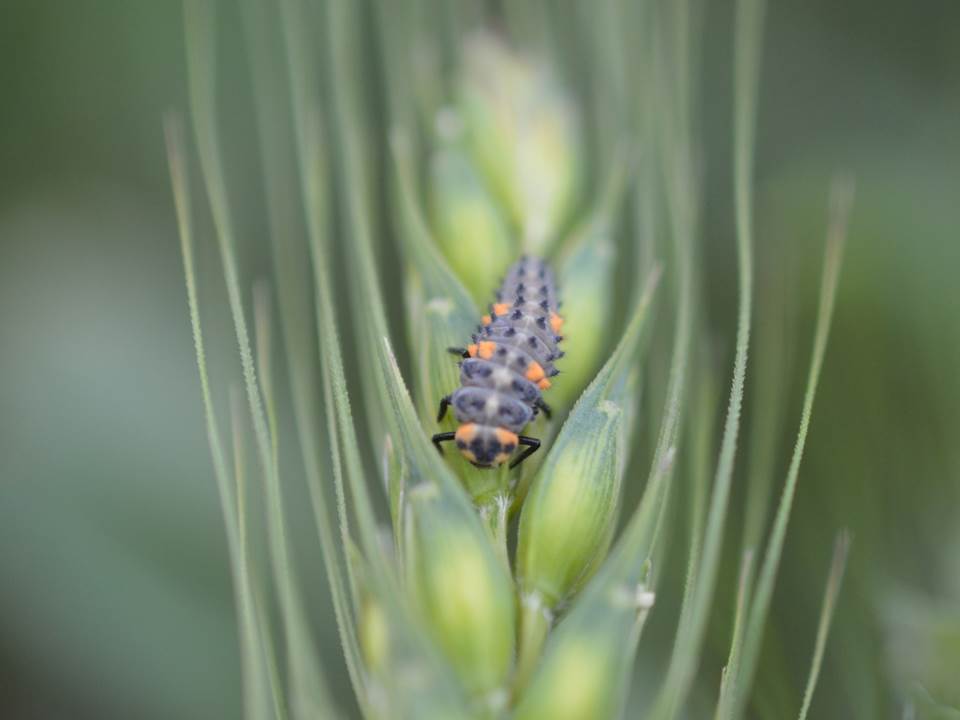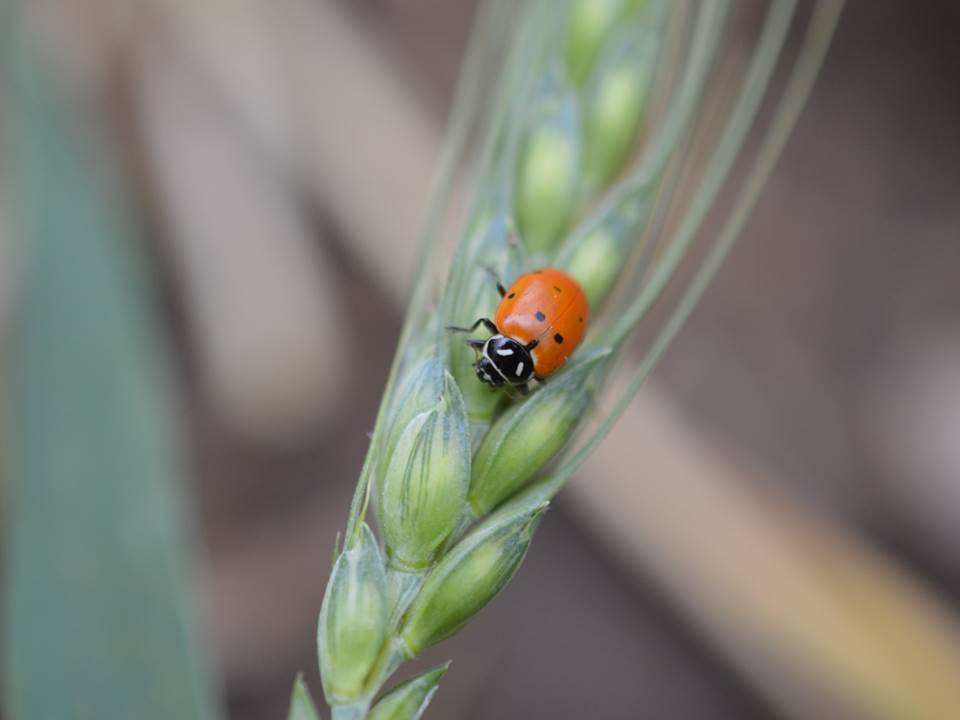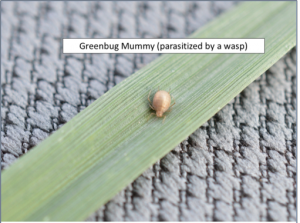–by Dr. Jeff Whitworth and Dr. Holly Schwarting
Alfalfa weevil larvae were first detected in north central Kansas on 3 March. Mr. Chuck Otte, Ag and Natural Resources Agent, also reported finding small larvae on 5 March in Geary County and Mr. Tom Maxwell, Ag and Natural Resources Agent, also reported finding small larvae and pinprick-sized holes in new alfalfa leaves on 9 March in Saline County. So, ready or not, alfalfa weevil larvae are here and, I would bet, many more will be hatching in the next few days to weeks. Alfalfa weevils will continue to hatch and larvae continue to develop any time temperatures exceed 48°F – and those temperatures have been much more common over the last few weeks than usual. Forecasts for the next 7-10 days also look for warm conditions. Thus, it looks like larvae will be emerging, and damage progressing, relatively quickly. Whether this warm weather will compress the alfalfa weevil larval feeding so that the damage is not as stretched out as usual remains to be seen. There are also many lady beetles present in the alfalfa fields we have checked as well as a few pea aphids. Treatment thresholds we use for alfalfa weevil insecticide applications are 30-50% infestation, i.e. 1 larva/2-3 stems.
For more information on alfalfa weevils, please visit:
http://www.bookstore.ksre.ksu.edu/pubs/mf2999.pdf
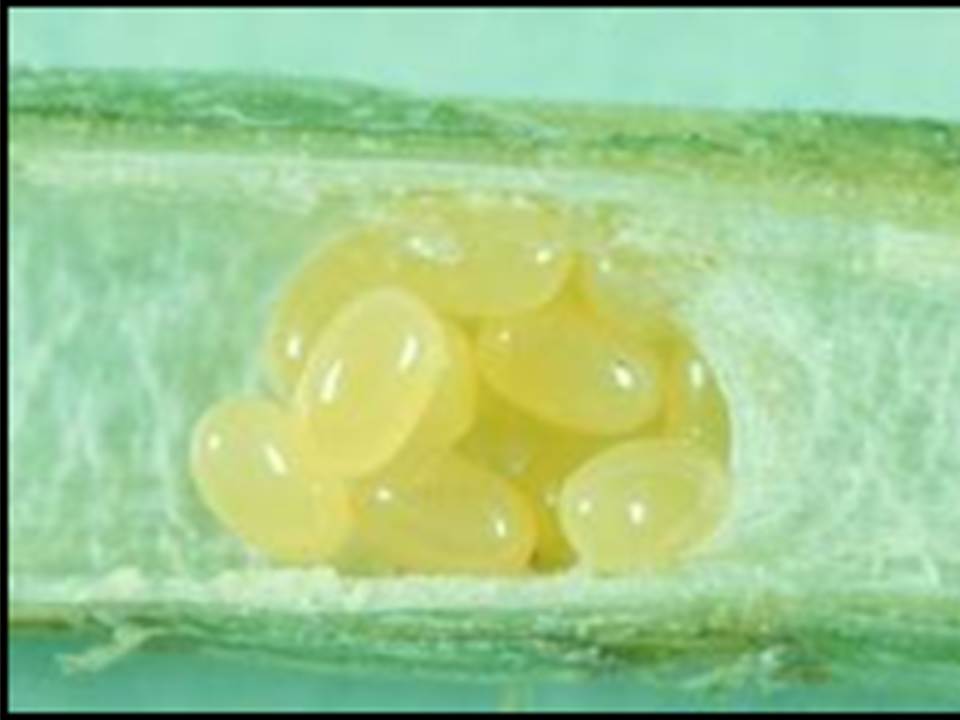
Overwintering alfalfa weevil eggs in stem
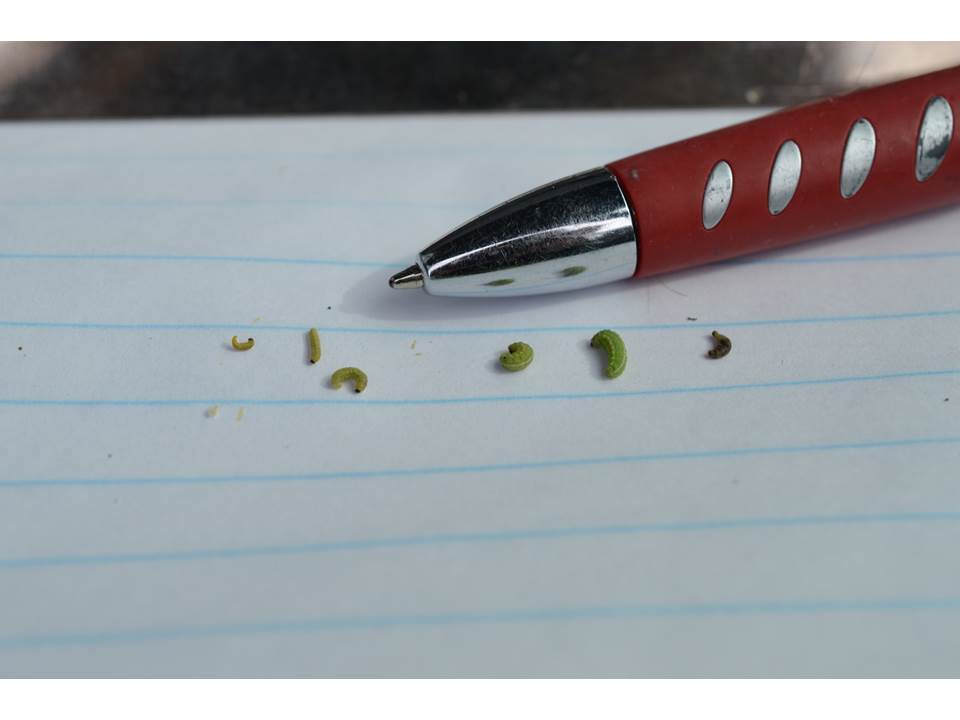
Early instar alfalfa weevil larvae
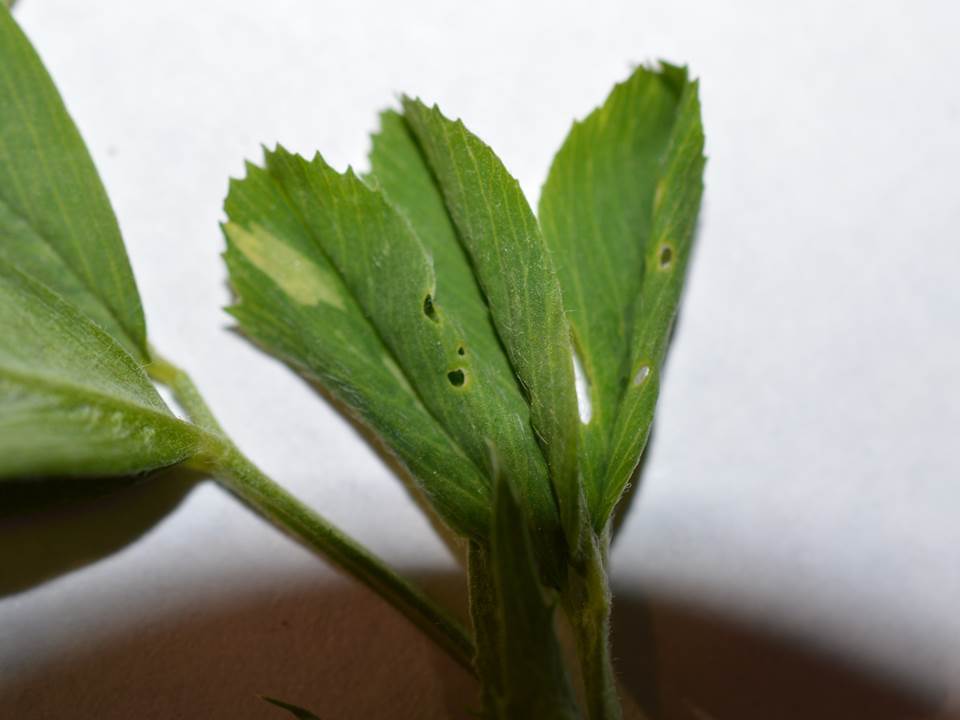
Pinprick feeding damage
